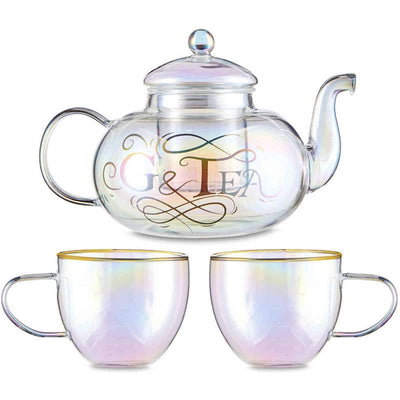How long should you decant wine for?
Now that you know the many benefits of decanting wine and how to achieve a higher taste level, it’s important to know how long you should decant your wine for, as this differs depending on its age, ingredients and colour. The ticking time clock for decanting wine can be intimidating, as no one wants to under aerate or over aerate their drink, destroying the flavour in the process.
But the process is far less complicated than it seems!
The tricky part is timing. Given that not enough oxygen or even too much can affect the wine’s ultimate taste, knowing how long different types of wine should be aerated and oxygenated for will make the process far easier.
Whilst many wines are decanted and benefit from aeration, they each benefit for different reasons, such as the smell as well as the taste and texture.
Sparkling wines such as champagne and prosecco don’t need to be decanted. Their uniqueness is in the fizz and it’s something we don’t want to lose by leaving it out in the open, losing its appeal.
But when a bottle of red or white wine is left unopened for some time, reduction begins to take place. Reduction, in its simplest terms, refers to its reduced condition when left in the bottle, before it is opened. It can be reduced due to the lack of oxygen present and decanting it will simply improve its state, improving the smell as well as the taste and texture. Therefore, if your rosé smells particularly pungent, it is certainly salvageable; decanting it for around 15-30 minutes will reintroduce you to the fruity scents it holds.
The wines that should definitely be aerated, no questions asked, are the reds and the aged wines.

Over the years, sediment within the wine increases due to the tannins bonding over time. Red wine creates far more sediment over time, making it far more crucial to decant the wine before serving and enjoying. Red wine can be decanted and left to aerate between 30 minutes to 2 hours in many cases, depending on many factors such as its age and strength. Red wine is far less sensitive to the air, hence it can be left to aerate for longer than other types of wine in many cases.
Many red wines also have different richness levels to them, and this is referred to as its body; it could be light bodied, or it could be far richer, making it full-bodied.
A light bodied wine such as Pinot Noir can ideally be left for 30 minutes before being sipped.
A medium bodied wine, such as Malbec or Merlot can be left to aerate in a decanter for up to an hour.
The richer red wines such as Monastrell or Cabarnet Sauvignon, being full-bodied, can rest for up to 2 hours.
So as it all depends on how you enjoy your red wine, it’s worth a few different taste tests over different periods of time as it is left to aerate, to see how your taste buds best react. The same can be said when decanting white wine - whilst there is a general sweet spot that is recommended, it’s more so a recommendation rather than a rule. The larger the surface area that the wine is open to, the quicker it will oxidise and it will need less time to decant. Given that the Drinkind wine decanter can be placed both horizontally vertically, it’s both a beautiful design as well as a convenient one when aerating and oxidising the drink.
Since it is not as simple as setting a timer, the best way to figure out how you best enjoy the decanted wine is to taste it during its development once decanted. Testing it sporadically over time will give you not only an indication of how it is changing, but how you best enjoy your own wine.






